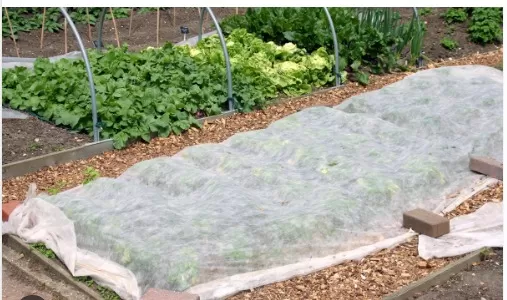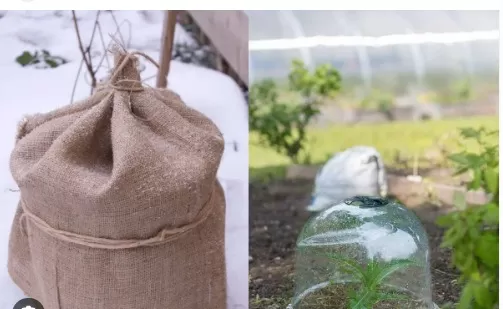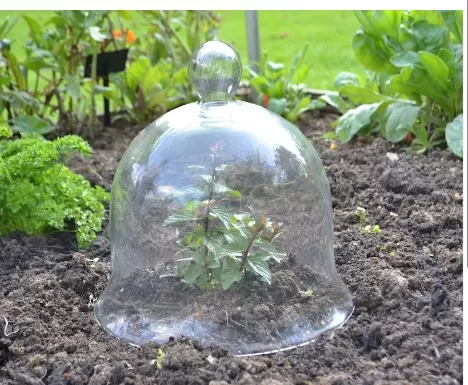Essential Plant Covers: 5 Types Every Home Gardener. To safeguard your outdoor plants from various weather conditions and pests, it’s essential to utilize practical plant covers.
These handy covers act as a protective shield, shielding your plants from harsh elements and potential damage. By employing plant covers, you can extend the lifespan of your outdoor plants and promote their healthy growth. Explore the different types of plant covers available to find the ones that best suit your specific needs and ensure the well-being of your cherished plants.
Extending the Growing Season: Exploring the Benefits of Row Covers in Gardening

Row covers, a gardener’s secret weapon, come in two varieties: fleece and plastic.
Fleece covers are perfect for safeguarding frost-sensitive plants while allowing moisture to seep through. On the other hand, the clear plastic row covers create a greenhouse-like environment, generating significantly warmer conditions inside compared to the outside temperature.
By utilizing both types of row covers, gardeners can prolong their growing season, making it particularly useful in frigid climates.
However, it is essential to monitor the plants regularly to prevent overheating. Additionally, securing the covers with stakes, rocks, or clips is crucial for their effectiveness.
Beyond extending the growing season, row covers serve as a formidable defense against pests and offer an early start to the gardening season.
Guarding Trees Against Winter\’s Wrath: Exploring the Purpose and Benefits of Tree Wraps
Imagine a mummy-like appearance, where the young trees in your yard are swathed in protective layers.
Tree wraps, similar to strips of fabric, paper, or burlap, encircle the trunks, shielding them from the harsh effects of rapid freezing and thawing cycles, which can lead to significant damage.
These wraps not only safeguard trees from temperature fluctuations but also deter animals and prevent harm caused by rodents and other pests.
Typically, gardeners apply tree wraps towards the end of the growing season and remove them in the spring. However, some individuals opt to keep them on throughout the year for continuous protection.
Tree wraps prove particularly useful in shielding recently planted trees that are still delicate and vulnerable to the unpredictable winter weather.
In essence, tree wraps act as a defensive barrier, ensuring trees survive winter’s wrath unscathed and thrive in the seasons to come.
Shielding Plants from Winter Burn: The Protective Power of Burlap

In the face of harsh winter conditions, wrapping shrubs and trees in burlap emerges as a reliable defense, safeguarding them from the dreaded winter burn.
When evergreen plants endure excessive sunlight and insufficient moisture during the cold months, they become susceptible to winter burn, resulting in browning foliage and detrimental effects on the overall appearance and health of the plants. Burlap, with its affordability, ease of use, and breathability, proves to be an effective solution.
To maximize its benefits, it is crucial to ensure that burlap does not directly touch the plants.
The preferred approach involves creating a tent-like structure using wooden stakes. This not only prevents the burlap from freezing and causing damage to the foliage but also secures the cover, preventing it from being blown away by strong winds.
By employing burlap as a protective shield, gardeners can mitigate the risks of winter burn, allowing their plants to thrive and maintain their beauty even in the harshest of winter climates.
Mulch: A Versatile Gardening Ally
Mulch stands as one of the most versatile tools in a gardener’s arsenal, providing essential plant protection.
In warmer weather, mulch plays a cooling role by reducing soil temperature. Conversely, during cold spells, it acts as insulation, safeguarding plant roots. Furthermore, mulch plays a crucial role in conserving moisture, reducing the need for frequent watering. Organic mulches go even further, improving soil condition over time as they break down and enrich the earth.
However, it’s important to exercise caution when applying mulch, ensuring it is not overly thick.
A layer around the base of a plant, no more than 4 inches in thickness, is ideal. Excessive mulch can suffocate plants and hinder their growth.
Fortunately, there are numerous options for mulch materials available. Raked fall leaves, coco coir, compost, wood chips, straw, shredded paper, and even gravel are all reliable choices.
With the right application of mulch, gardeners can harness its benefits to protect plants, regulate soil temperature, conserve moisture, and enhance soil quality, contributing to the overall health and vitality of their garden.
Cloches: Temporary Shields for Tender Plants

When unexpected frosts threaten your tender plants, cloches prove to be invaluable tools for temporary protection.
While your first frost date might still be weeks away, sporadic cold weather can catch you off guard. In such situations, there’s no need to panic.
Simply reach for some cloches and place them over your most frost-sensitive plants, granting them a few more weeks of survival.
Cloches also find utility in springtime for protective purposes.
However, it’s important to note that these small, portable greenhouses can be quite expensive, making them less ideal for shielding large areas or large shrubs.
Though their coverage may be limited, cloches offer a practical solution for safeguarding individual plants or small sections of your garden from unexpected cold snaps.
Their temporary nature allows for flexibility and adaptability, ensuring your delicate plants have the best chance at thriving despite unpredictable weather patterns.
*The information is for reference only.